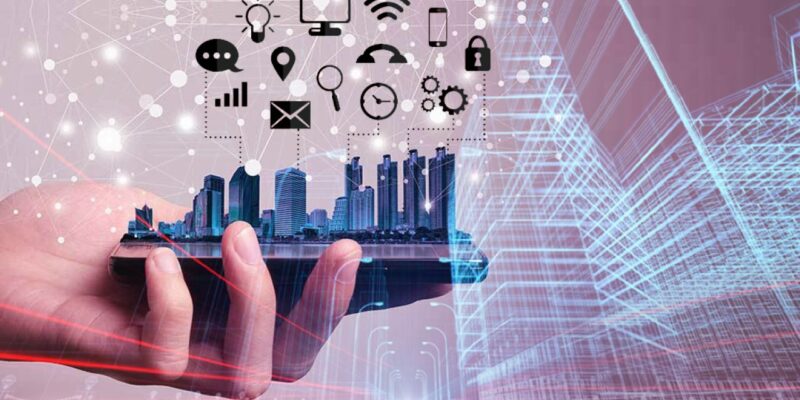The Internet of Things (IoT) refers to electronic devices with sensors, processing power, and software that allow them to communicate with similar devices or control them. Some common examples of IoT devices are smart door locks, which allow you to remotely control the entry and exit through the door. Similarly, you have smart heating systems, which can adapt to your preferences and set the temperature without you having to adjust the temperature every day.
Smart voice assistants like Alexa, Google Assistant, and Siri, are some popular examples of smart assistants that can control all of your smart devices at your home. One important thing to note is that you need a strong internet connection like CenturyLink internet to make sure the IoT devices at your home keep working smoothly. The administrative control might not work properly if your internet connection is acting up.
The IoT devices are just the first step in building more sustainable ecosystems called smart cities with less carbon footprint and more automation to make our lives easier. Various institutions have launched pilot smart city projects to further the adoption of smart technology, and they’ve shown promising results, albeit with some challenges. Here is how the IoT is helping smart cities build more sustainable ecosystems.
Smart Transportation
IoT devices are being adopted in transportation to increase efficiency, public safety, and sustainability. This includes autonomous vehicles or self-driving cars, which can communicate with each other via sensors and the internet. This helps avoid accidents and increases public safety.
If implemented in public transport, smart traffic management systems can monitor and optimize traffic with perfectly timed signals. This can especially help metropolitan cities during rush hours and help eliminate hour-long queues. In addition, IoT devices can help drivers find nearby parking spots and park their vehicles for them while ensuring public safety.
There’s another positive aspect to this implementation as well. As this technology gets better, more and more people will start using public transit for everything, as it will be far more convenient than driving yourself to a place. With smart public transit systems containing IoT devices, you could view all the travel-related information in real-time and even expect personalized entertainment.
Moreover, our economy depends on logistics to complete the purchase and selling of goods in both domestic and international markets. Smart logistics systems can help monitor the whole logistics fleet and recommend optimal routes to avoid delays. This will ensure public safety and reduce costs.
Worldwide Smart City Projects
Europe is taking the lead when it comes to smart cities with many projects developed throughout the EU to foster the growth of smart cities. Even though many smart city projects are running in North America, the progress is far behind that of Europe. Here are some of the leading European and American cities where smart city projects are making a positive impact.
Paris
In a bid to reduce the carbon footprint, a French firm Vincent Callebaut Architectures came up with a plan to develop multiple high-rise buildings with positive energy output (BEPOS). This is in line with Paris’ plan to reduce the amount of greenhouse emissions by at least 75% by 2050.
London
The first smart city project in London was launched in 2014 when a smart parking system was deployed in Westminster. This helps drivers find free parking spots quickly and reduce traffic congestion. Now, there’s no need to roam around searching for a parking spot, while also blocking other people.
Copenhagen
This European city intends to become the world’s first carbon-neutral smart city by 2025, which might seem like an ambitious goal at first glance. However, the city is exhausting resources to materialize this goal. The Nordhavn district is using smart heating systems that are connected to the power grid. This helps them acquire more data to build energy-efficient buildings and integrate electric vehicles into the energy system.
San Francisco
San Francisco implemented a pilot program to regulate the traffic by using Multimodal Intelligent Traffic Signal Systems, Transit Signal Priority, and Emergency Vehicle Preemption. This will help reduce the number of collisions and mitigate traffic jams much faster than traditional traffic management systems.
New York City
NYC is also implementing a similar smart city project to reduce the number of traffic-related injuries and deaths. This involves a system of connected vehicles with IoT devices mounted on all vehicles, and surrounding infrastructure. These devices will be able to communicate with each other and pedestrian devices to improve public safety.
Wrapping up
As the population grows in the coming years, smart cities will become instrumental in managing resource constraints. The future of IoT looks promising as long as it’s used correctly. Just like any other technology, it faces a few challenges, including data privacy concerns. This calls for a careful approach to this technology. The benefits of implementing smart cities could potentially alter the way we live our lives.













Comments